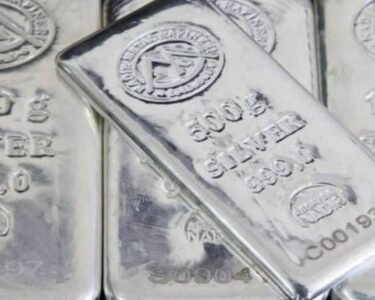Key points
- Gold is a rare metal that is dense, incredibly malleable, and resistant to tarnishing.
- Gold is an excellent conductor of heat and electricity, and can be used in super fine sheets and wire for electronics including mobile phones and computers.
- The largest known gold resources in the world are found in Australia.
Everything is golden during awards season with gold-plated Oscars and beautiful gold jewellery. We’ve been researching gold for decades, and it has many brilliant applications. From understanding how gold deposits form to applying technology to help discover miniscule particles of gold, we’re going for gold.
We’re researching ways to support the whole mining value chain from uncovering gold and other precious metals, discovery and exploration, mine planning and extraction, to monitoring. We’re working on recycling critical metals, which is especially important for precious metals like gold.
Here are some Oscar-worthy golden technologies we’ve developed.
Gold is a precious metal. These are rare metals with high economic value, including gold, silver, and platinum.
Finding gold in the dust
We don’t want to waste any gold that is found. We partnered with Gekko Systems to develop sensor technology that can detect precious metals in low concentration levels. As low as 10 parts per billion!
The On-line Gold Analyser (OLGA) uses X-ray fluorescence to detect ultra-low levels in slurry streams, in real-time, while the mineral processing plant is running.
Gamma activation analysis finds golden atoms
The Chrysos PhotonAssay, launched back in 2016, bombards ore samples with high-powered X-rays. These activate and excite the nuclei of the metal atoms.
This tool is particularly sensitive to gold. A detector picks up the gamma-ray signature of the gold and determines its concentration. This process saves hours, or even days, of traditional assaying.
Chrysos’ Photon Assay delivers fast and highly accurate gold analysis
Microbes to recycle precious metals
The conductive properties of gold make it perfect for use in circuit boards and other electronics. The amount of gold used is tiny. But considering the amount of e-waste the world generates, a lot of gold, silver and platinum is there to be recovered.
It’s still new and not specific to gold, but research into biomining could help the e-waste recycling process. Biomining uses microbes like bacteria to extract metals through processes like bioleaching. This process in particular could be used to retrieve metals in printed circuit boards.
Soil sampling uncovers new gold
Soil sampling is often the first prospecting step in gold exploration, but the gold can be very small and absorbed into clays. The UltraFine+® process was developed to separate this ultra fine soil (fewer than two microns) before it is analysed. This essentially provides a geochemical microscope, magnifying very low levels of gold.
The UltraFine+ process was created through a partnership between us and the Minerals Research Institute of Western Australia, Geological Survey of Western Australia, LabWest, and exploration companies. It has been used to reanalyse old soil surveys to help identify new areas for gold exploration. It has been taken up by more than 160 mineral explorers since it was commercialised in 2020.




